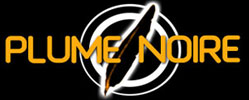
|
Gangs of New York review
:. Director: Martin Scorsese
:. Starring: Leonardo DiCaprio, Daniel Day-Lewis
:. Running Time: 2:40
:. Year: 2002
:. Country: USA
|
In West Side Story, the Sharks and the Jets danced a Jerome Robbins rumble; in Gangs of New York, the gangs, the Dead Rabbits and the Natives, smash each other's brains and assorted body parts to bloody bits, entertaining the movie-going public the modern way. Whatever else Gangs of New York is about, "American Violence" is certainly one theme. But in the same way that the 1994 Natural Born Killers lost credibility, the overdone blood-letting and torture in Gangs undermines the film. Understandable, yes, from the director of bloody wonderful movies from Mean Streets to Raging Bull to Goodfellas and beyond. But, really, so much about Gangs was so fresh, it's a pity, because seeing this sort of movie bloodletting only reminds us that THIS IS A MOVIE. Not to belabor the point, we know a certain amount of requisite onscreen limb-mangling is necessary to get a movie made these days. Oh, right, Scorsese has gotten away in the past with a few character-driven stories that omitted the bleeders. I just wish he had de-emphasized the gore and worked harder on developing the characters in this one.
The movie begins in 1846 as these two gangs from the Five Points section of Manhattan square off and smash away, while the young son of the Dead Rabbits' leader Priest Vallon (Liam Neeson in what amounts to a cameo), watches the action and witnesses his father's killing by Bill "the Butcher" Cutting (Daniel Day-Lewis), the leader of the Natives. Here is movie-cliché number one: Amsterdam grows up (Leonardo DiCaprio now), returns to Five Points without revealing his bloodline to anyone, and plans his bloody revenge on Bill while Bill, meanwhile, becomes a sort of father to this youth who plans to kill him. Meanwhile, cliché number two (and I'll stop listing them now: there are too many and it's too boring) is that the villain, Bill the Butcher, had great respect for the man he gutted (it might not have exactly been "gutting," but why quibble?) and even has his picture reverently hanging on the wall in his shop. Exactly why he felt that way is never addressed: it's just how it is, in the way of Great Movie Villains in History. Daniel Day-Lewis does a remarkable job with Bill, triumphing over the script with passion, inventiveness and intelligence. Nobody else, except maybe Brendan Gleeson (as the former Dead Rabbit Monk McGinn) manages to portray much beyond the surface of a superficially-written script. We know very well DiCaprio can do better, but he apparently isn't yet as inventive as Day-Lewis.
If this were Shakespeare (and it may be that Scorsese had Shakespeare in mind), we would see into the hearts of these characters. The advantage of the stage is that it's never going to successfully emulate realism, so ideas and abstractions get their chance to fly. This, an historical film (though the accuracy of the history is the subject of popular debate which we won't go into), suffers mightily from the obvious energy and effort that went into the graphic depiction of action. At the same time, the detailing provided by the sets, the costumes, make-up, and all of the cinematic elements enhance the sense of time and place. But as fascinating as it was to look at this representation of lower Manhattan in the Civil War period, somehow it still felt like we were looking at a stage. In fact, three weeks after seeing the movie, I've recovered enough from the blood-drenching of the set such that my visual memory of Five Points brings to mind the fantastic Sweethaven from Popeye, the 1980 Altman film. Now, that's a contrast. (Popeye was also a stagey failure, with its own testosterone-driven knock-about between Bluto and Popeye, played by scrunch-faced Robin Williams.)
Watching Gangs of New York stimulates sarcasm the way Movies That Should Have Been Better always do. Here is a film that deigns to explore a fascinating period of American history that most people know little about, and yet it seems to have yielded to cliché and theatricality so often that we have to work hard to tease out what we're supposed to understand about the history. At the end of the film when the gangs are once again trying to tear each other's flesh to bits, while the draft riot of 1863 is being put down by the military, and black folks are being lynched right and left, the screen shows the dense smoke from cannon firings that blinds everyone in the area. You hear the sounds of violence around you, but you can't see who's standing right in front of you. We're lost in this same darkness (as the people in lower Manhattan literally were after the World Trade Center was destroyed), but only in an unbelievably ridiculous script could what happens next happen. The film's a mess, with wonderful filmmaking mixed in with trash. I recommend seeing it for the sheer uniqueness of it, but understand that what you are watching might simply be called The History of the Whack in New York City.
Carol Saturansky

 Movie Reviews: from 1998 to 2011 Movie Reviews: from 1998 to 2011
 New Film Reviews since 2012 New Film Reviews since 2012
|
|


